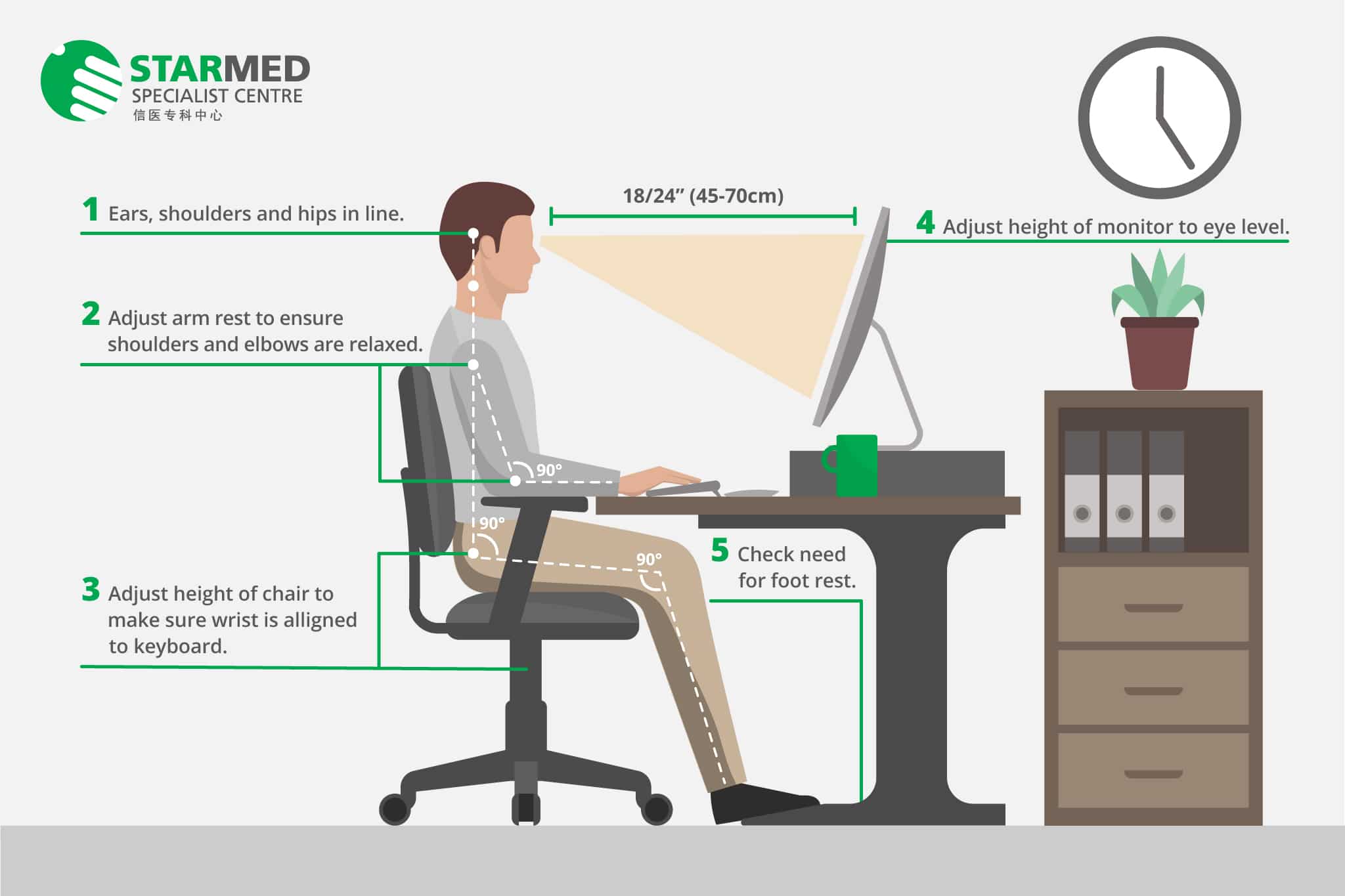Ergonomic is the field of science that focuses on improving the work environment to optimise efficiency and comfort at work. Ergonomic care also aims to minimise injuries to the body and to maximise productivity at work. Due to Coronavirus (COVID-19), many people have needed to work from home. The working environment is no longer the usual office desk. It may be the home study room, the dining table, the coffee table or even the sofa. Moreover, we may no longer be working on a desktop, the laptop would be a more common office tool for us to get work done.
With the widespread adoption of home-based learning, many working adults may also have to sacrifice their home working desk to the children, allowing them to complete their school work. This shift in practice may be on a long-term basis as the doctors and scientists work towards finding a cure or a vaccine for COVID-19. Thus, we really have to focus or even invest in tools, gadgets or furniture to optimise the ergonomic for work at home.
Most of us spend a large amount of time sitting and working on a laptop or desktop. A correct sitting posture is essential to optimise from an ergonomic perspective.
An ideal sitting posture can be achieved by adjustment of the working environment in the sequence:

The sitting posture should be similar when using a laptop. An adjustable laptop stand and an additional keyboard would be necessary to optimise ergonomic when using a laptop. The resulting position should be similar to the above.
With poor ergonomics, one can develop:
- Neck pain and stiffness
- Low back pain and stiffness
- Carpal tunnel syndrome
- Tennis elbow syndrome
Don’t Forget the Feet
Unlike usual working in office whereby we are wearing shoes during the entire day time, many of use would also be walking barefooted at home during work from home. As a result of working from home and lockdown, we are also walking and exercising less. This reduction in activities also causes the calves muscles to stiffen up. These changes would again cause injury to the body. Due to the increased stress over the sole and Achilles tendons without shoe-wear, some people may develop:
- Plantar fasciitis
- Achilles tendinitis
Get the Right Treatment
Many of the above conditions can be treated by an orthopaedic surgeon. The doctor will ask you some questions to better understand your condition. The doctor will also do a thorough examination of the involved region. Non-surgical treatment includes activity modification, physiotherapy, shock wave therapy, anti-inflammatory medications, steroids injection and platelet-rich plasma injection. Surgical treatment will vary according to conditions.





